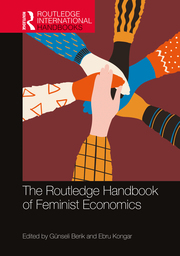 Fisheries and aquaculture are important sectors of the economy and women are important if underappreciated economic actors in them. Despite this, economic studies in fisheries and aquaculture rarely address the gender dimension except in superficial terms, ignoring such factors as gender power relations and what work gets recognised as economic. Several disciplinary avenues exist for economic studies on women and gender, but not all are likely to take feminist approaches.
Fisheries and aquaculture are important sectors of the economy and women are important if underappreciated economic actors in them. Despite this, economic studies in fisheries and aquaculture rarely address the gender dimension except in superficial terms, ignoring such factors as gender power relations and what work gets recognised as economic. Several disciplinary avenues exist for economic studies on women and gender, but not all are likely to take feminist approaches.
One is orthodox or neoclassical economics. This field is the most common economic approach of mainstream fisheries economics. Presently it is virtually blind to gender and equity considerations. A second is feminist economics, a recognised heterodox economics approach. To date, its use in the fish sectors has been rather limited, but its feminist approaches offer promise
In addition to mainstream and feminist economics, other disciplines have more commonly addressed gender and feminist inquiry in their economic sub-fields such as economic geography (MacLeavy et al 2016, Strauss 2020) and economic anthropology. The Commission on Gender and Geography of the International Geographical Union has been active for over 30 years supporting professional events and products that include feminist economic geography themes such as migration, labour, care work and development (Huang et al 2017). An example of feminist fisheries economic geography is the work carried out over several decades in Kerala fisheries by Holly Hapke, e.g., Hapke and Ayyankeril (2018).
Feminist economics
For those wanting to learn more about feminist economics, The Routledge Handbook of Feminist Economics (released in May 2021) could become an essential text. It will be of interest to researchers working on gender in aquaculture and fisheries who seek insights into what feminist economics may offer for fisheries and aquaculture. The book conveys the current status and findings from a growing body of feminist economics research, and could provide inspiration for new economic research approaches in fisheries – if only the data are available or can be found. At this stage of the development of feminist economics, however, fisheries has not received attention.
Although it’s roots can be traced back to at least the 19th Century and its seeds even earlier, feminist economics was not formally recognised by the mainstream economic establishment until 2006 when the American Economic Association allocated it JEL code (B54) as a Heterodox Economics approach (Becchio 2019, especially see timeline pp 217-222). In 2008, The New Palgrave Dictionary of Economics, included an entry on “feminist economics” (Nelson 2008). Well before this formal recognition from the mainstream economics establishment, feminist economics research had developed to the stage of forming its own Association in 1992 (the International Association of Feminist Economics – IAFFE), and in 1995 launching the journal Feminist Economics.
In 2004, Marilyn Power published the paper which would become the basis for the Routledge Handbook of Feminist Economics, as its editors Günseli Berik and Ebru Kongar describe in their Introduction. In her paper, Power (2004) identified 5 emerging themes in feminist economics research, and she terms this the Social Provisioning Approach (SPA):
- incorporation of caring and unpaid labor as fundamental economic activities;
- use of well-being as a measure of economic success;
- analysis of economic, political, and social processes and power relations;
- inclusion of ethical goals and values as an intrinsic part of the analysis; and
- interrogation of differences by class, race-ethnicity, and other factors.
The Handbook brings a comprehensive treatment to these themes, with chapters written by some of the who’s who of feminist economics. In depth, it also treats: the core concepts; methods, methodology and measures; the resources for provisioning; institutions and policies; and international governance and social provisioning.
The Social Provisioning Approach in its various parts has been touched on repeatedly in gender and fisheries/aquaculture research, e.g., the use of women’s unpaid labour, making this book relevant to our sector. This book may help inform ideas for what feminist fisheries economic research could be done.
Note: In view of the increasing interest in fisheries economics and gender, we have also added the terms “feminist economics,” “gender economics” and “feminist economic geography” to our Genderaquafish Glossary of terms. Check this out to understand the difference.
ACKNOWLEDGEMENT: I thank Holly Hapke for her expert feedback on earlier drafts of this blog. The shortcomings of the final version are all my own.
REFERENCES
Becchio, G., 2019. A History of Feminist and Gender Economics. Routledge.
Berik, G. and Kongar, E. eds., 2021. The Routledge Handbook of Feminist Economics. Routledge.
Hapke, Holly M. and Devan Ayyankeril, 2018. Gendered livelihoods in the global fish-food economy: a comparative study of three fisherfolk communities in Kerala, India. Maritime Studies, 17(2), pp.133-143.
Huang, S., Monk, J., Droogleever Fortuijn, J., Garcia-Ramon, M.D. and Momsen, J.H., 2017. A continuing agenda for gender: the role of the IGU Commission on gender and geography. Gender, Place & Culture, 24(7), pp.919-938.
MacLeavy, J., Roberts, S. and Strauss, K., 2016. Feminist inclusions in economic geography: What difference does difference make?. Environment and Planning A: Economy and Space, 48(10), pp.2067-2071.
Nelson, Julie A. “feminist economics.” The New Palgrave Dictionary of Economics. Second Edition. Eds. Steven N. Durlauf and Lawrence E. Blume. Palgrave Macmillan, 2008. The New Palgrave Dictionary of Economics Online. Palgrave Macmillan. 01 January 2009 https://doi.org/10.1057/978-1-349-95121-5_2210-1
Power, M., 2004. Social provisioning as a starting point for feminist economics. Feminist economics, 10(3), pp.3-19.
Strauss, Kendra 2020. “Feminist economic geography.” (2020): 43-46. In Kobayashi, Audrey (Editor-in-chief) International Encyclopedia of Human Geography, 2nd Edition. Elsevier
This entry was posted in: Concepts, Economics, Theory
